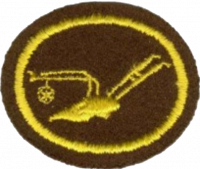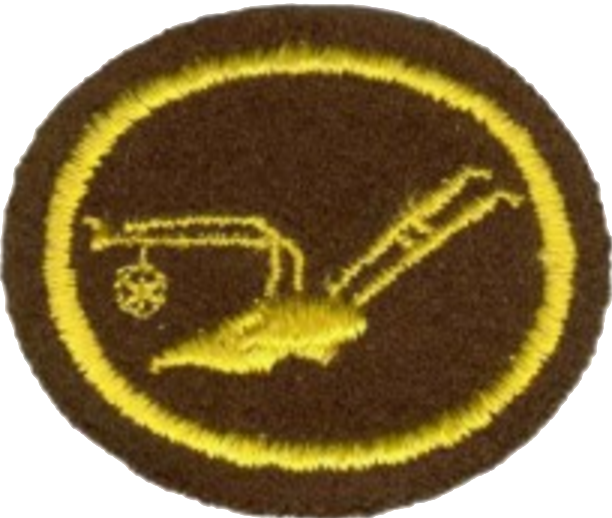Difference between revisions of "AY Honors/Agriculture/Answer Key/es"
From Pathfinder Wiki
< AY Honors | AgricultureAY Honors/Agriculture/Answer Key/es
(Created page with "</noinclude> <!-- 3. Examinar la germinación de tres variedades de semillas, 100 semillas por cada variedad. Registrar el porcentaje de germinación después de tres, cuatro...") |
|||
| (12 intermediate revisions by 2 users not shown) | |||
| Line 1: | Line 1: | ||
| − | + | {{HonorSubpage}} | |
| − | |||
| − | {{ | ||
| − | |||
| − | |||
| − | |||
| − | |||
| − | |||
| − | |||
| − | |||
| − | }} | ||
| − | |||
| − | |||
| − | |||
| − | |||
| − | |||
<section begin="Body" /> | <section begin="Body" /> | ||
{{ansreq|page={{#titleparts:{{PAGENAME}}|2|1}}|num=1}} | {{ansreq|page={{#titleparts:{{PAGENAME}}|2|1}}|num=1}} | ||
| Line 44: | Line 29: | ||
{{ansreq|page={{#titleparts:{{PAGENAME}}|2|1}}|num=4}} | {{ansreq|page={{#titleparts:{{PAGENAME}}|2|1}}|num=4}} | ||
<noinclude></noinclude> | <noinclude></noinclude> | ||
| − | <!-- 4. | + | <!-- 4. Explicar cómo las plantas obtienen nutrientes y cómo los convierten en comida. Explicar las diferencias entre nutrientes primarios, secundarios y micronutrientes. --> |
| − | |||
{{clear}} | {{clear}} | ||
| Line 53: | Line 37: | ||
{{ansreq|page={{#titleparts:{{PAGENAME}}|2|1}}|num=5}} | {{ansreq|page={{#titleparts:{{PAGENAME}}|2|1}}|num=5}} | ||
<noinclude></noinclude> | <noinclude></noinclude> | ||
| − | <!-- 5. | + | <!-- 5. Nombrar e identificar 10 malezas comunes de la comunidad y decir la mejor manera de eliminarlos, usando métodos manuales o químicos. --> |
| − | |||
| − | |||
| − | |||
| − | |||
| − | |||
| − | |||
| − | |||
| − | |||
| − | |||
| − | |||
| − | |||
| − | |||
| − | |||
| − | |||
| − | |||
| − | |||
| − | |||
| − | |||
| − | |||
| − | |||
{{clear}} | {{clear}} | ||
| Line 113: | Line 77: | ||
{{ansreq|page={{#titleparts:{{PAGENAME}}|2|1}}|num=6}} | {{ansreq|page={{#titleparts:{{PAGENAME}}|2|1}}|num=6}} | ||
<noinclude></noinclude> | <noinclude></noinclude> | ||
| − | <!-- 6. | + | <!-- 6. Identificar seis plagas comunes de insectos o enfermedades. Mencionar qué plantas generalmente son afectadas y la forma de eliminar o prevenir su aparición. --> |
{{clear}} | {{clear}} | ||
| Line 153: | Line 117: | ||
{{ansreq|page={{#titleparts:{{PAGENAME}}|2|1}}|num=7}} | {{ansreq|page={{#titleparts:{{PAGENAME}}|2|1}}|num=7}} | ||
<noinclude></noinclude> | <noinclude></noinclude> | ||
| − | <!-- 7. | + | <!-- 7. Localizar dos fuentes de información meteorológica agrícola. ¿Cómo es ésta información útil para el agricultor? --> |
| − | |||
| − | |||
| − | + | {{clear}} | |
{{clear}} | {{clear}} | ||
| Line 167: | Line 129: | ||
{{ansreq|page={{#titleparts:{{PAGENAME}}|2|1}}|num=8}} | {{ansreq|page={{#titleparts:{{PAGENAME}}|2|1}}|num=8}} | ||
<noinclude></noinclude> | <noinclude></noinclude> | ||
| − | <!-- 8. | + | <!-- 8. Ayudar en la siembra, cultivo, cosecha en por lo menos four diferentes cultivos. Mantener un registro del trabajo realizado y los problemas que enfrentó en la siembra a la cosecha. --> |
| − | |||
| − | |||
| − | |||
| − | |||
| − | |||
| − | |||
| − | |||
| − | |||
| − | |||
| − | |||
| − | |||
| − | |||
| − | |||
| − | |||
| − | |||
| − | |||
| − | |||
| − | |||
| − | |||
| − | |||
| − | |||
| − | |||
| − | |||
| − | |||
| − | |||
| − | |||
<noinclude></noinclude> | <noinclude></noinclude> | ||
| Line 199: | Line 135: | ||
{{ansreq|page={{#titleparts:{{PAGENAME}}|2|1}}|num=9}} | {{ansreq|page={{#titleparts:{{PAGENAME}}|2|1}}|num=9}} | ||
<noinclude></noinclude> | <noinclude></noinclude> | ||
| − | <!-- 9. | + | <!-- 9. Conocer el propósito de los siguiente: --> |
<noinclude></noinclude> | <noinclude></noinclude> | ||
{{ansreq|page={{#titleparts:{{PAGENAME}}|2|1}}|num=9a}} | {{ansreq|page={{#titleparts:{{PAGENAME}}|2|1}}|num=9a}} | ||
| Line 223: | Line 159: | ||
{{ansreq|page={{#titleparts:{{PAGENAME}}|2|1}}|num=10}} | {{ansreq|page={{#titleparts:{{PAGENAME}}|2|1}}|num=10}} | ||
<noinclude></noinclude> | <noinclude></noinclude> | ||
| − | <!-- 10. | + | <!-- 10. Nombrar y determinar las 10 aves comunes de su localidad y decir su valor para el agricultor. --> |
| − | |||
{{clear}} | {{clear}} | ||
| Line 232: | Line 167: | ||
{{ansreq|page={{#titleparts:{{PAGENAME}}|2|1}}|num=11}} | {{ansreq|page={{#titleparts:{{PAGENAME}}|2|1}}|num=11}} | ||
<noinclude></noinclude> | <noinclude></noinclude> | ||
| − | <!-- 11. | + | <!-- 11. ¿Qué es la erosión? ¿Cómo puede prevenirse? --> |
| − | |||
<noinclude></noinclude> | <noinclude></noinclude> | ||
| Line 239: | Line 173: | ||
{{ansreq|page={{#titleparts:{{PAGENAME}}|2|1}}|num=12}} | {{ansreq|page={{#titleparts:{{PAGENAME}}|2|1}}|num=12}} | ||
<noinclude></noinclude> | <noinclude></noinclude> | ||
| − | <!-- 12. | + | <!-- 12. Visitar una cooperativa local de servicios de extensión y averiguar la forma en que la organización ayuda a los agricultores. Escribir un informe de una página de la visita. --> |
{{clear}} | {{clear}} | ||
| Line 253: | Line 187: | ||
<noinclude></noinclude> | <noinclude></noinclude> | ||
==Referencias== | ==Referencias== | ||
| − | |||
<noinclude></noinclude> | <noinclude></noinclude> | ||
| − | + | {{CloseHonorPage}} | |
Latest revision as of 17:56, 25 July 2022
1
Mencionar de los componentes del suelo. ¿Por qué es importante el suelo para las plantas?
2
Explicar la diferencia entre la arcilla, arena y suelos loam. Hacer una lista de tres cultivos que crecen bien en cada una de ellas.
3
Examinar la germinación de tres variedades de semillas, 100 semillas por cada variedad. Registrar el porcentaje de germinación después de tres, cuatro y cinco días.
La especialidad de Semillas - Avanzado tiene un requisito similar, entonces considere desarrollarlas juntas.
4
Explicar cómo las plantas obtienen nutrientes y cómo los convierten en comida. Explicar las diferencias entre nutrientes primarios, secundarios y micronutrientes.
5
Nombrar e identificar 10 malezas comunes de la comunidad y decir la mejor manera de eliminarlos, usando métodos manuales o químicos.
6
Identificar seis plagas comunes de insectos o enfermedades. Mencionar qué plantas generalmente son afectadas y la forma de eliminar o prevenir su aparición.
7
Localizar dos fuentes de información meteorológica agrícola. ¿Cómo es ésta información útil para el agricultor?
8
Ayudar en la siembra, cultivo, cosecha en por lo menos four diferentes cultivos. Mantener un registro del trabajo realizado y los problemas que enfrentó en la siembra a la cosecha.
9
Conocer el propósito de los siguiente:
9a
Arado
9b
Remover tierra con discos de tractor
9c
Cultivar
9d
Riego
9e
Cosecha
10
Nombrar y determinar las 10 aves comunes de su localidad y decir su valor para el agricultor.
11
¿Qué es la erosión? ¿Cómo puede prevenirse?
12
Visitar una cooperativa local de servicios de extensión y averiguar la forma en que la organización ayuda a los agricultores. Escribir un informe de una página de la visita.


